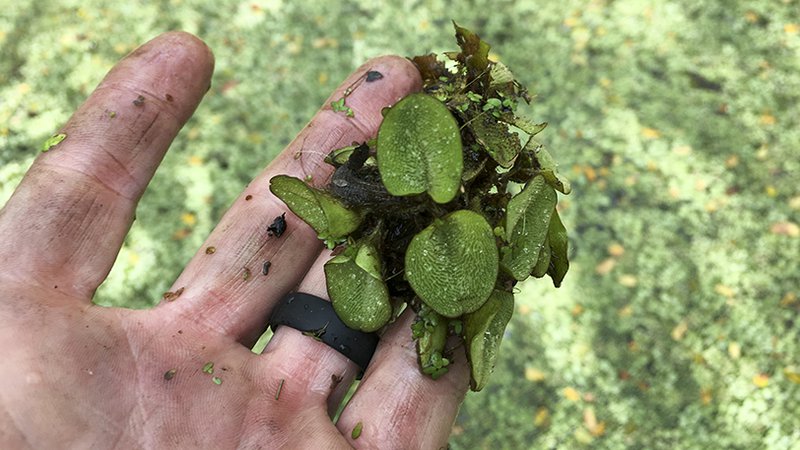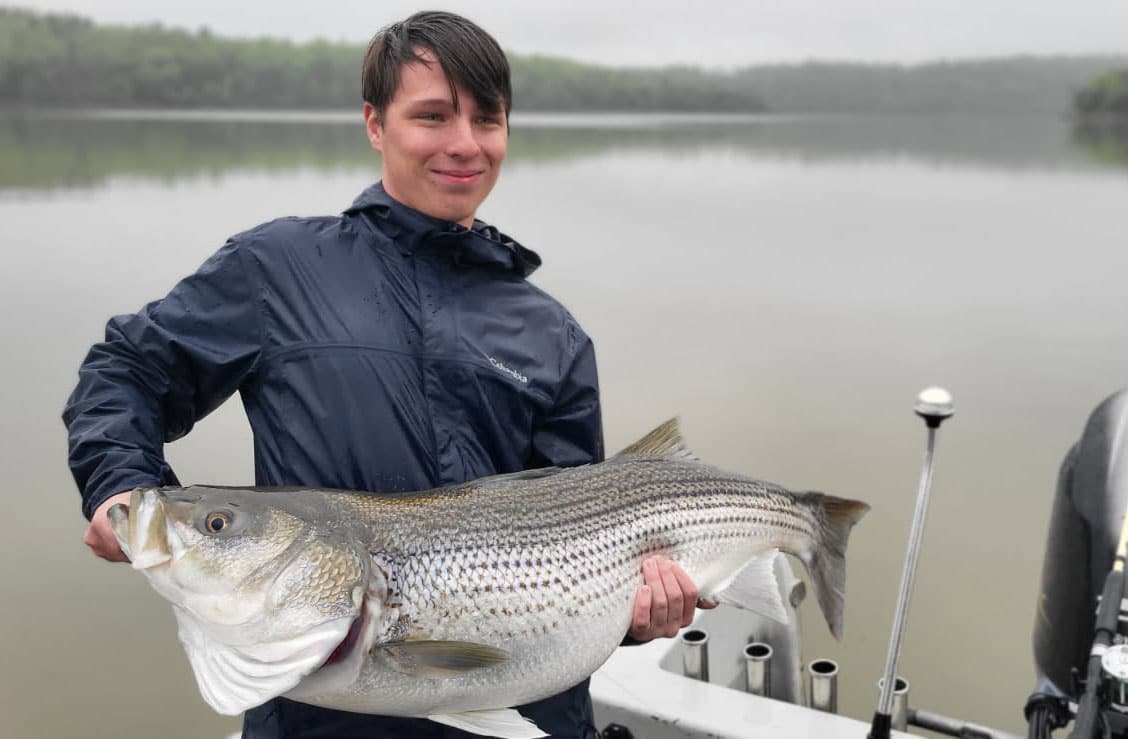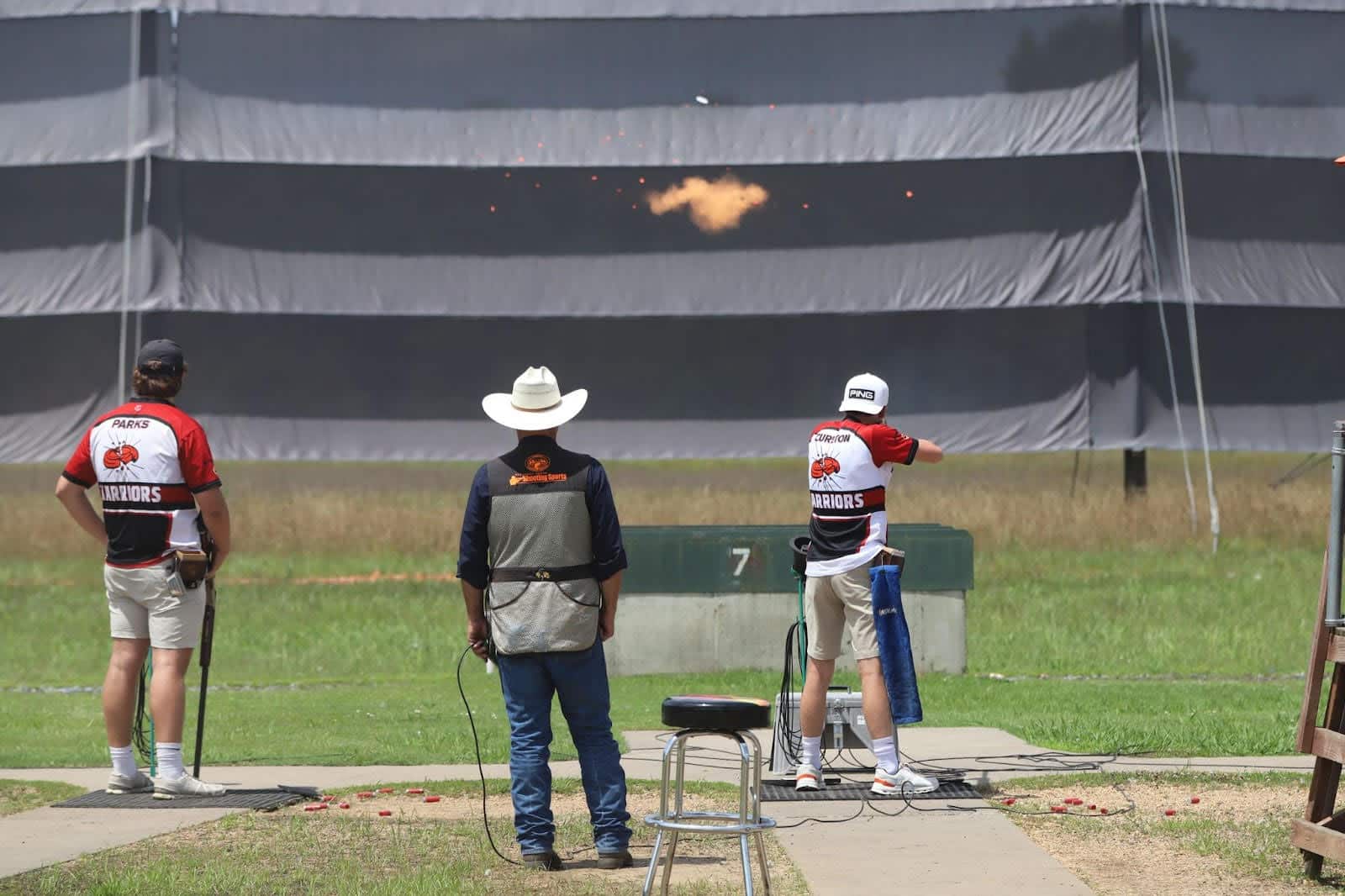Invasive species found near Sulphur River WMA
ON 11-15-2017

Nov. 15, 2017
Randy Zellers
Assistant Chief of Communications
Another big, scary monster has been spotted near Boggy Creek in southwest Arkansas, but this one is green, lives in the water and has been knocking on Arkansas’s door for years. Giant salvinia, an invasive species of plant, was discovered last week on Smith Park Lake in Miller County, and biologists are scrambling into action.
Giant salvinia is a free-floating South American plant, similar in appearance to duckweed but much larger. It stays at the water’s surface and can rapidly cover a large area and choke out all life in the water beneath if left unchecked. According to Sea Grant Louisiana, under ideal conditions, a single plant of giant salvinia can multiply to cover 40 square miles of surface area in only three months.
Arkansas Game and Fish Commission staff have done an extensive search throughout the lake’s watershed, and so far the only areas where the plant has been found are in Smith Park Lake and a swampy area on private land directly downstream of the lake.
Jason Olive, AGFC assistant chief of fisheries, says the most likely source of the plant’s appearance was during recent floods.
“There aren’t any boat ramps on Smith Park, so it’s pretty unlikely that it came in from boats or trailers, which is one of the ways the plant spreads over long distances,” Olive said. “Wright Pattman Lake in Texas is in the same floodplain and has been documented with giant salvinia. It’s probable that some plants washed into the lake from there and started multiplying.”
Olive says the lake and swampy area are adjacent to Sulphur River Wildlife Management Area, a popular duck-hunting WMA in southwest Arkansas, for now. The plant already has grown to cover nearly 100 acres of the 150-acre Smith Park Lake, which is filled with cypress trees.
“The trees make removal even more difficult because they offer crevices and other small spaces for this plant to hide and they make spraying the plants with herbicide more difficult,” Olive said. “If we don’t take care of this as soon as possible, another flood may wash the nuisance into nearby bodies of water like Long Slough or Mercer Bayou.”
Biologists have worked with Miller County to get permission to pump water from the lake. Once the lake level has been lowered, herbicide will be sprayed on the vegetation and the lake will be kept low with the hopes that cold winter temperatures will help kill off any remaining parts of the plants. Biologists also are working with the landowner below the lake to eliminate the nuisance species there as well.
“The landowner is disappointed that we may need to drain this area and spray with waterfowl season approaching,” Olive said. “But he understands that this plant will completely cover any water that would have been habitat for ducks if it is left to grow. He is willing to work with us however we need to stop it.
“Louisiana spends nearly $9 million a year spraying aquatic nuisance vegetation, and nearly three-quarters of that is to fight giant salvinia,” Olive said. “That’s money that could go to fisheries habitat management and other important work. We want to knock this out as quickly as possible to prevent it from getting a foothold in Arkansas.”
Recent News

Arkansas Wildlife Weekly Fishing Report
Apr. 24, 2025

Contenders take aim as shooting sports regionals begin
Apr. 23, 2025
Subscribe to Our Weekly Newsletter E-mails
Don’t miss another issue. Sign up now to receive the AGFC Wildlife Weekly Newsletter in your mailbox every Wednesday afternoon (Waterfowl Reports are published weekly during waterfowl season and periodically outside the season). Fishing Reports arrive on Thursdays. Fill in the following fields and hit submit. Thanks, and welcome!
